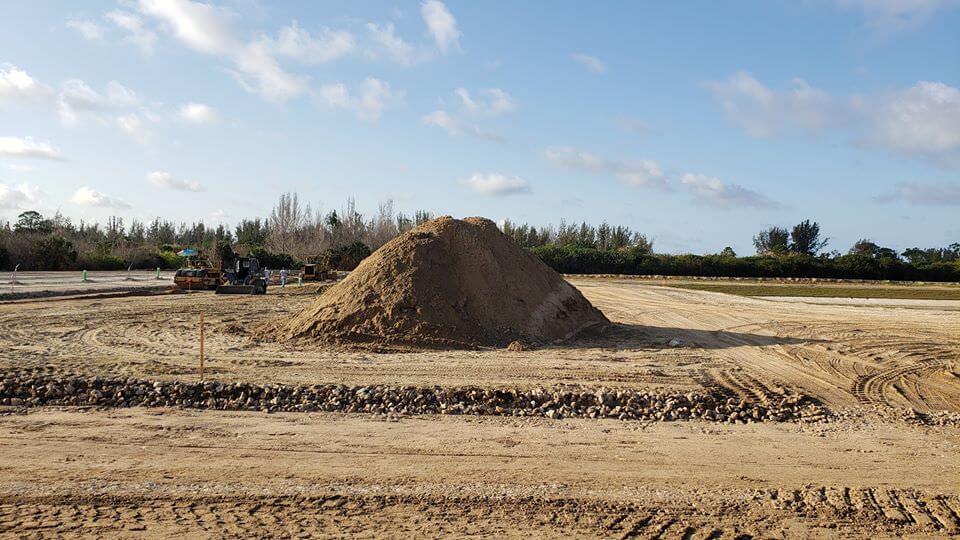This week basketball practice started for my son’s 1st-grade team, The Clippers, whom I get the opportunity to coach. At first glance, outside of the very dissimilar physical differences, I thought I was in one of our weekly subcontractor progress meetings. Four kids locked in and focused on having a productive practice. One kid did not want to be there, two kids wanted to complain about everything, two showed up for the snack at the end of practice and one kid showed up 10 minutes late. Yes, this season will be the constant herding of cats but then I laughed, went home, and told my wife I do this every day. Our job as the general contractor is to take the constant chaos and charter a path for everyone to follow. Below are the eight principles The Clippers are focused on this season followed by a description of how each...
Read More >Technology in Construction for 2023
Thanks to the surge in attention to construction technology over the last few years, our once dark and analog industry has benefited from many tools that help produce higher quality projects more efficiently. Here are some of the solutions The Douglas Company is making a focus this year:
- Scheduling Software - Supply chain issues and workforce shortages are expected to continue in 2023, and without a detailed and outstanding project schedule any project is going to suffer from inefficiency and lost time. As schedules get more complicated, tools that help understand their data and the effects of one task on another. The Douglas Company uses SmartPM, a web-based tool that tracks changes between schedule versions, availability of float, compression, and overall health of a schedule. This gives our project managers more information to help prioritize work on-site and focus on the right work areas.
- Project Photography - Pictures tell a thousand words,... Read More >
Switchgear Demand Craziness!!!
Behind the critical milestones of building dry-in and completion of drywall hanging, the date of permanent power provides a key indicator of a project’s schedule trajectory towards completion. Unfortunately, the current construction industry is being severely impacted by major challenges within the electrical gear industry driven by demand, labor issues, and electrical component shortages. Critical switchgear components such as switchboards, distribution panels, and heavy-duty circuit breakers have historically taken four to six months to receive. Over the past year, lead times on these items have increased to a minimum of 12 months, and quoted lead times of 14-18 months are becoming the standard.
So how does this impact the construction industry? For comparison, a $25 million senior living project with a construction schedule of 18 months, would typically require permanent power to be in operation by the twelfth month of construction to allow the startup-up of essential HVAC equipment, building systems,...
Read More >Value Engineering or Contingency??
Inflation, fuel prices, material escalation, and material shortages are pushing construction prices to record highs. Already tight project budgets are being value engineered, tabled in hopes that pricing will come back to earth in the future, or just abandoned. Like everything else these days, the typical value engineering process is not as effective as it once was. When project pricing comes in over budget, we have historically provided a list of suggested alternate materials, methods, and/or systems to help bring the cost back closer to budget if needed.
Currently, inflation is working against project teams trying to value engineer projects. On several recent projects, material escalation has negated any value engineering efforts. Meaning…during the time it takes to price VE alternates, and get the accepted changes into the design documents, the pricing of the other trades and materials has increased an equal or larger amount of the costs saved from the approved value...
Read More >No One Can Whistle a Symphony
“No one can whistle a symphony. It takes an orchestra to play it.” Famous quote by H.E. Luccock.
Closing a job and seeing it to the finish is not easy. Most in our industry would tell you it can be the least favorite part of the project. Most would also tell you it is impossible to live in fantasy land after working through the challenges of the last two years. There’s no magical bench of labor we can pull from and have crews arrive onsite the next day when needed. There’s no la-la land where the material is in stock and can be pulled off the shelf for overnight delivery. At The Douglas Company (TDC), our core purpose is to contribute to the success of our clients and associates. The industry has changed which has required us to adapt and change with it.
The All American Assisted Living at Enfield...
Read More >Don’t Get Soft on Wood Buildings
Wood structures seem to have gotten a bad rap the last few years. It’s not entirely their fault. The skyrocketing land costs have pushed projects to go to more stories than a conventional wood frame building allows to get the number of units needed. Massive price hikes and volatility of material costs have also made it a less desirable building material to use.
Throughout the years The Douglas Company has proudly worked hard to build as much of our work out of wood as possible. We thought we should revisit the good reasons and tactics for doing so that still exist today.
Wood framing is simply faster than other methods. Modular and panelized systems abound in our industry now, but none of them from our experience go up faster than a wood-framed structure. Despite some of the scary lead times we’ve seen over the last two years, wood framing materials involve many...
Read More >As Boring as Dirt – Understanding Your Site Construction Options
It is easy to focus on the building cost per square foot in the preconstruction process, but the site costs can make or break a project. Too often we see scope creep on the project site after the initial site plan, and it takes asking the right questions and getting creative to bring these costs back in line.
As your civil plans develop and soils reports become available, make sure you’re asking the design team these questions:
- Grading - Are the buildings at the right elevation? The finished floor level is usually set early in the design process, but as more requirements become known it may not be the right height anymore. Raising/lowering a finished floor level can help reduce soil import/export, and can have positive impacts on your storm sewer layout as well.
- Deep Foundations/Undercuts - It seems that poor soils are an issue on most projects we are looking at... Read More >
Technology Advances in Construction
As the world continues to evolve with technology, so too does the construction industry, albeit at a much slower rate. Looking back over the last 15 years, it is incredible to think about how much technology has changed in our daily lives. Smartphones weren’t very prevalent and the first generation of the iPhone had just been released. Businesses used fax machines instead of email to transmit information, very few people knew what the cloud was, and drones, as we know them today, didn’t exist.
As it relates to the construction industry, 15 years ago I can remember physically mailing sets of drawings out to people for them to bid jobs and waiting for their faxed bid to come through. People used an actual camera to take pictures, and submittals were wet stamped and mailed to the design team for their review.
All of the efficiencies gained through technology really are fascinating. To...
Read More >What’s the New Standard in Senior Living Communities?
It’s hard to believe that it was in May that I blogged about being ready to “turn the corner” on everything that was impacting the country. I guess I was a little impatient. In the meantime, it is as we predicted that there would be some creative times ahead in the design and construction of senior living communities.
We have spoken with a lot of our colleagues in the senior living operations and design community in the last couple of months to learn about what they want to implement into their future projects to increase health and safety when a contagious health crisis such as Covid-19 hits. At the top of the list is upgraded HVAC systems to better filter airborne pathogens as well as increase fresh air circulation. A close second is UV technology to kill microbial particles (both incorporated into HVAC systems as well as other equipment options for...
Read More >Exoskeletons in Construction
When you hear the word exoskeleton you probably start thinking of something out of a sci-fi movie like Alien or Avatar, but they are starting to make a presence in construction. Exoskeletons or exosuits are a wearable technology typically made from metal and other fabrics that attach to the body. They are aimed to help lessen the strain on workers' body allowing them to work quickly and safely while reducing injuries. With the potential to reduce required muscle force by as much as 60%, it’s easy to see what kind of an impact this technology could have on workers by easing the physical demands that come with the job. Currently, there are two (2) main types powered and mechanical (passive), and over five (5) main categories for these power suits: power gloves, arm/shoulder support, back support, standing/crouching support. As this technology continues to evolve it will be interesting to see...
Read More >Robotics in Construction
With a continued labor shortage across the country and no signs of change in the near future, some firms are looking to/have implemented robots into their workforce to help combat this issue. Robots in their present capacity are being used to perform repetitive tasks like laying brick, tying rebar, hanging drywall, etc. They are also performing demolition, 3-D printing, and assisting with lifting activities. In 2018 the construction robotics industry was roughly a $23 million market, however, this market is being forecasted to grow to nearly $226 million by 2025 according to the article by Tractica. Some of the benefits being reported by those utilizing robots are increased speed and efficiency, higher levels of safety, and the ability to integrate with design software such as BIM. As one who has never had robotics performing labor on a construction project, I am looking forward to experiencing it and to what impact...
Read More >5 Trends to Look for in Commercial Construction in 2019
In what has been a historically slow adapting industry, we are beginning to see some evolving trends to traditional construction. Below is a list of trends to keep an eye out for in 2019 and beyond:
- Modular Construction: The modular construction market is projected to grow at a compound annual growth rate of 6.9% from $112.4 Billion today to $157 Billion in 2023. This large growth is being driven by the reduced skilled labor force.
- Technology assisting human workers: There are subcontractor’s that are beginning to utilize robotics in assisting and working alongside their human workforce, whether it be tying lifting items, increasing productivity, etc. Those utilizing robotics believe they are reducing the physical strain on workers allowing them to prolong their working careers, as well as, reducing the repetitiveness/redundancy allowing workers to do more meaningful work.
- Design-Build’s Growing Popularity: FMI is predicting spending on design-build to increase around 18% in the... Read More >
Punch Lists and Technology
- Use of cloud-based platforms that allow continual sharing and updating of information between team and contractors.
- With the use of new features, punch items can be added on-the-fly from any smartphone or tablet, making punch lists a continuous process throughout the job, instead of one big list at the end.
- Bar codes and phone scanners... Read More >












